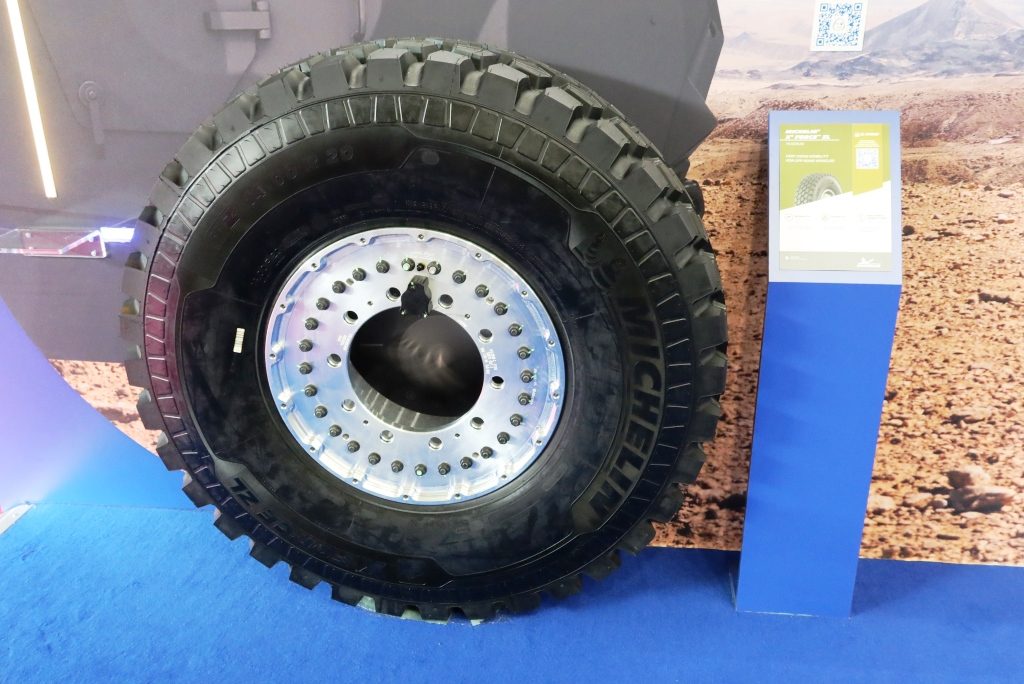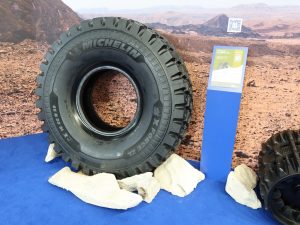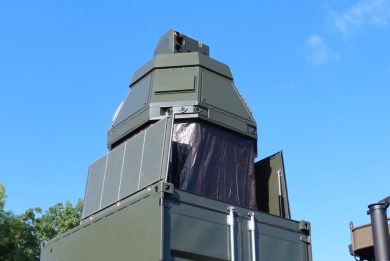
Michelin X Force ZL: higher load and speed for military wheeled vehicles
Many issues are often considered in mobility, tracks versus wheels being a never ending discussion, and when the latter win issues on number of axles, power-to-weight ratio, types of suspensions, and other parameters are also taken into account. However the first element that ensures mobility, the one that makes the contact between the vehicle and the terrain is definitely the pneumatic.
Michelin is surely one of the major key players in the military tyres world. At Eurosatory the company headquartered in Clermont-Ferrand, in central France, promoted its brand new line of tyres, which is already available in some dimensions, the line still to be completed.
Named Michelin X Force ZL, its development was made necessary by new requirements coming from military forces, which ask for higher load capacity and a maximum speed of 110 km/h, which by the way is the limit speed for special tyres.
Some tyre series were 25 years old, while some other were only a decade old, however the company decided to develop the new series of tyres, starting from the 16.00 R 20, which load compared to the existing XZL has been increased from 6,500 to 6,700 kg, a 3% increase that on an 8×8 vehicle means however 1.6 tonnes extra payload capacity. Here the maximum speed could not be reached, speed being however increased from 90 to 100 km/h.
In April 2022 the 14.00 R 20 was launched, here the advantage over the XZL+ being greater; load jumps from 5,000 to 5,600 kg, a 12% increase, speed passing from 100 to 110 km/h. This tyre is considered particularly important by Michelin as all vehicles part of the French Army Scorpion programme, the Griffon, the Jaguar and the Serval, have the same wheels dimension that its those tyres, standardisation being key to reduce the logistic footprint. These are far from being the only vehicles to which Michelin is aiming; Again for standardisation reasons, the new fleet of trucks which request for quotation should be launched soon in France will also be fitted with those tyres, the grand total announced being 9,600 vehicles ranging from 4×4 to 8×8. France is of course not the only country using that type of tyre, Germany, Turkey and the United Kingdom being some of the areas where the French pneumatic company looks with interest.
Another dimension that was launched in April this year is the X Force ZL MPT 365/80 R 20, which main interest is over the Ocean, as it is that of the JLTV, a major market considering the numbers involved. The company has over 30 facilities and more than 22,000 employees in North America, and is already one of the major suppliers of the US military. Compared to the previous XZL MPT the load rises from 3,550 to 4,250 kg, nearly 20% more, the speed remaining the same; this means that they can be fitted to a 4×4 vehicle with a 17 tonnes GVW rather than 14.2 tonnes, ensuring a considerable growth capacity. In 2023 two more X Force ZL should be available, the 365/85 R 20 and the 395/85 R20. All the aforementioned tyres are tubeless, but can also be used with tubes.
Now that
the roadmap has been clarified, let’s come to how Michelin managed to reach
such improvements. As said increasing load and speed were the two main targets,
however lessons learned from recent deployments of French Army units in
Afghanistan and Mali were taken into consideration, cutting stones being for
example an issue in the African scenario.
The design has changed, and now the tyre has five ribs instead of four.
According to Michelin experts this allows a better cooling of the tyre, which
means an increased load when used I in hot climates. It also provides increased
traction in the mud, the behaviour in sandy terrains remains similar to the
previous design. While the X Force ZL has shown improved grip in winter
conditions. Last winter Michelin carried out a test campaign at the Finnish Ivalo Testing Centre, in Lapland, also known as
“White Hell”. The full analysis of those tests is still ongoing, however
improvements were obvious both in transverse grip and in braking. According to
Michelin the latest version of its military tyre managed to stop the vehicle on
snow from 30 km/h speed in 12.4 meters,
while most competing tyres do it in 16 meters, an over 20% reduction.
In a tyre the rubber mix is key to obtain performances, and is obviously a subject that is not discussed publicly. Beside performances it is also key for the tyre duration. Michelin states that the new mixture proved to be stronger when confronted with the company pebble track, especially on the tread, the company estimating a 25-35% increased life for the X Force ZL pneumatic.
Michelin military tyres are produced in France and Italy, for the European market, and in Canada, for the North American market. In July the Michelin facility in India, which is located north of Chennai, on the Bay of Bengal in eastern India, will start producing military tyres for the local market as well as for the ASEAN and Middle East ones. The production of the new X Force ZL 14.00 R 20 tyre should start in India in 2025.
Michelin is constantly discussing with vehicles manufacturers, military entities and end users in the field in order to improve the approach to wheeled mobility. How much it still makes sense to equip combat and logistic vehicles with similar tyres is a matter of discussion, as well as the search for extreme performances on standard wheels. The adoption of dedicated tyre kits for specific conditions, for example a combat kit with reinforced shoulders or winter kits with high performances on snow and ice, might be a solution. How much the military market will evolve at short-medium term, as more and more combat vehicles will shift from tracks to wheels, remain to be seen.
Photos by P. Valpolini




